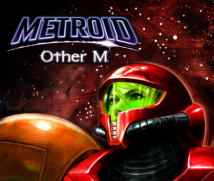4. A 'Superb Trio' Collaboration
How did you see the relationship between Sakamoto-san and Kitaura-san, Hayashi-san?
Well, when they were explaining the movements on the storyboards, for example, there’d sometimes be a reference to an obscure old monster film that only the two of them would get.
So these references meant nothing to you, coming from a different generation?
That’s right (laughs). They’d say things such as ‘This part is just like Gyaosu7’ – I was none the wiser what they meant.
Ah, Gyaosu, eh? (laughs)
It was just the two of us who understood.
Actually, I’m a member of the generation that knows about Gyaosu as well... (laughs)
(laughter)
We had to answer questions as basic as ‘What is Gyaosu?’. 7 Gyaosu was a monster who appeared in films produced by the Daiei Motion Picture Company. He first appeared in Daikaijū Kuchu Kessan: Gamera tai Gyaosu, which was released in Japan in 1967.
Still, I actually think Hayashi-san is the most grown-up of the three of us. He’s really cool, too.
In contrast, I’m a man of burning passion but just running around in circles. (laughs) Well, while it wasn’t just the three of us working on this project, I really got the feeling that our individual personalities and characteristics coordinated in a very comfortable way.
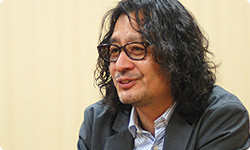
I’ll ask this question to the cool one, then. Hayashi-san, during the development of Metroid: Other M, when did you first feel ‘Wow, this is great’?
Those kinds of reactions came at the moments where it felt like we’d just put the different pieces of a jigsaw puzzle together. During the early stages of development, the action parts and the movie parts of the game were created separately, and there was a lot of anxiety about whether the two parts would fit together well. Around the end of 2008, we put the beginning of the game together. As it happens, everything slotted into place really well.
The action and the movies went together seamlessly, didn’t they?
Yes, they did. When I saw that, I felt I’d seen a little of the ‘action game that tells a proper story’ that Sakamoto-san was always talking about, and I thought ‘This could really work’.
What about you, Kitaura-san?
I was exactly the same as Hayashi-san. The action parts were created on Hayashi-san’s side and the movies were created separately on my side. Sakamoto-san was able to see both sides objectively and I’m sure he had an image of how they would look when put together, but when I actually saw them combined, I thought ‘Nothing like this has ever been done before’.
Even though you created a lot of storyboards, and despite the fact that you always knew what the next scene was going to be when you created CG, it was still a surprise for you when you saw them put together, then, Kitaura-san?
Yes, I was really surprised.
I think the fact that we asked Kitaura-san to be responsible for the production of the whole game, not just the movies, was a big factor in making the action and the movies fit together like pieces of a jigsaw puzzle.
I think so too, because Kitaura-san kept insisting that ‘We have to have the same Samus in the movies as in the action parts’.
Well, there’s only one Samus in the world, you know. Making Samus look really good in one part of the game would have been useless if it meant there was a ‘movie Samus’ and an ‘action Samus’. I didn’t want the player to feel there was any inconsistency, so I personally played the game parts several times myself. ‘Seamless’ was one of the themes of this project, but that wasn’t just about the transition from action to movies – I thought that making the player’s feelings seamless was also very important.
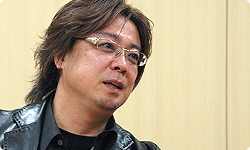
Making the player’s feeling seamless?
Yes. I thought it was important that the player could enjoy the story and the action without having any interruptions in the way they felt.
Funnily enough, both Kitaura-san and Hayashi-san have said that they felt a really positive reaction when the game parts and the movie parts were coupled together. What do you think about that, Sakamoto-san?
Metroid: Other M’s structure is basically that of an action game, but I thought that if we were able to successfully fuse the action and the story, we could make ‘an action game that’s like an adventure’, something that hasn’t been seen before.
Sakamoto-san, you worked on text adventure games such as Famicom Tantei Club 8 in the past, didn’t you? 8 Famicom Tantei Club was an adventure game series for the Family Computer Disk System. The first game in the series, Famicom Tantei Club: Kieta Kokeisha was released in Japan in April 1988 (it was split into two parts; the second part was released in June 1988).
I did, yes. When I thought about creating ‘an action game that tells a proper story’, I did feel I could make good use of this experience, even though the experience of creating text-based adventure games seems completely irrelevant at first glance. In adventure games, the player selects and executes commands such as ‘examine’ and ‘move’ during intervals in the story. In an action game, the selection of these commands is replaced by the player performing actions such as fighting enemies and actually moving the character themselves.
You mean controls such as jumping and shooting enemies are equivalent to the commands in adventure games?
That’s right. I think that actually just moving a character for themselves gives a player a completely different sense of immersion in a game when compared to selecting commands. Story movies that start at important points further expand the game and present the player with new puzzles, providing motivation for them to proceed. With the player caught up in the tension of the story and being dragged along with Samus’s emotions, the game returns to the action part. That’s the flow of the game.
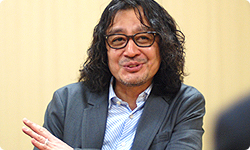
I see. So the movies are not simple breaks in the action or production decorations. The idea is that the player can enjoy the game as an unbroken chain, with the action parts and the movie parts providing the same sensations. This allows them to enjoy a whole new gaming experience.
I think we’ve been able to make a Metroid with an enjoyable story this time. I was really thinking that I’d like a large audience of players to enjoy this ‘action game with a proper story’ – that’s the reason for the simple controls, too. I wanted as many people as possible to try this game.
All right then. Finally, do you have a message for the people who’ve been waiting eagerly for this game? Let’s start with you, Kitaura-san.
Sure. We wanted to implement the highest possible quality of CG in this game, and we’ve really tried our best to do so, but actually I’d like players to pay attention to Samus’s voice actress as well. Samus is a woman who is poor at coping with life’s problems. As a result, we chose a voice actress not because she’s technically proficient, but because she could talk naturally in her own words.
So her essence is close to Samus’s.
Yes, that’s right. Also, regarding the sound in the game, we recruited Haishima-san as a composer who could tell the story with melodies9. He has created music for each scene which, I think, was powerfully helping us depict Samus’s feelings and emotions, and I think perhaps you were impressed with them too, Sakamoto-san? 9 Kuniaki Haishima is a composer who is active in a wide range of genres, including films, TV dramas, anime, video games, and TV commercials.
Of course.
Furthermore, there is a great feeling of fulfilment to be had by completing this game, and I think it’s a work that can be deeply moving, so I hope that players enjoy it to the end.
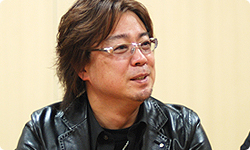
Thank you very much. What about you, Hayashi-san?
For this project, we at Team NINJA created Samus’s body, but it was Sakamoto-san that made the blood pump through her veins, and Kitaura-san that provided her soul. And so, while it is an action game, I think it has a genuine story to enjoy, and I think it has the power to stir the emotions. This game took three years to create, so it’s probably something I feel quite serious about, but like I said before, this is ‘a NES game using the latest technology’. That’s why I really want players, even those who have grown quite distant from action games, to feel ‘Action games these days can be this much fun?!’.
In other words, you want them to see that you’ve created a really exciting game using the latest technology and simple NES controls, yes?
Yes, that’s right. I’d also really be happy if players felt that there was a possibility that action games in the future could take this form as well.
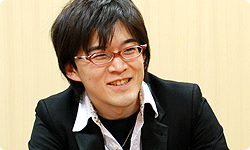
All right. And finally, Sakamoto-san.
I think there will be some people harbouring negative assumptions about this game, such as ‘What’s this Metroid full of movies all about?’, or ‘This’ll probably be another game for hardcore players’. By posing the question: ‘Can’t we make a wider range of people happy with this style of Metroid?', though, I really feel we’ve challenged ourselves with this game. I think the incredible team we were blessed with was the reason we were able to accomplish this. I feel extremely grateful for this.
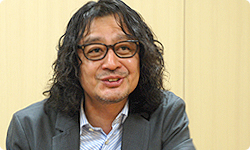
I hear the concept of ‘collaboration’ talked about a lot these days, but I think there are two types of collaboration: simple addition, and multiplication. I think this project functioned really well as an example of ‘multiplication’. That’s what I felt when I actually got my hands on the game, and talking to these two people today, I feel it more and more. You’ve been very lucky, haven’t you, Sakamoto-san?
Absolutely, I’ve been really lucky.
I’ve recognised anew that the team which created this project can be called, with no shame whatsoever, a ‘Superb Trio’. I also really hope that a lot of people get to see for themselves what results have been produced on this project by ‘multiplying’ the talents of three people from three different fields.
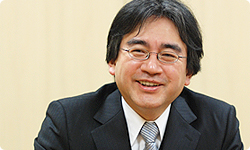
I think that the members of this collaboration were called by Samus herself. We empathised with her and we gradually helped to refine her. As a result, Samus is more beautiful than ever this time.
So it looks like more people will fall in love with Samus, does it?
Yes, so... (earnestly) I think Samus is going to be a very happy girl.
